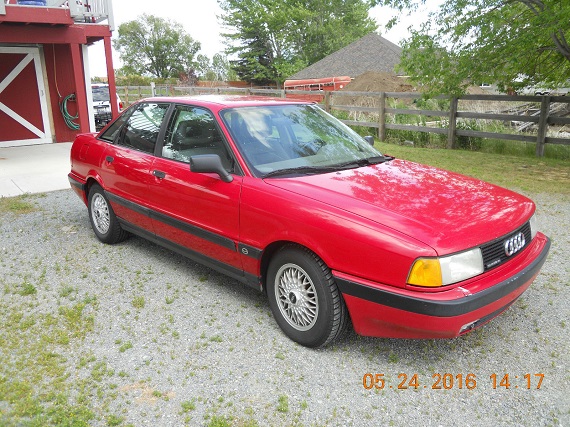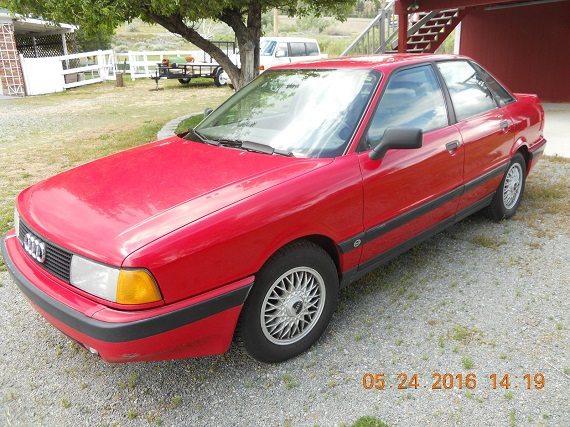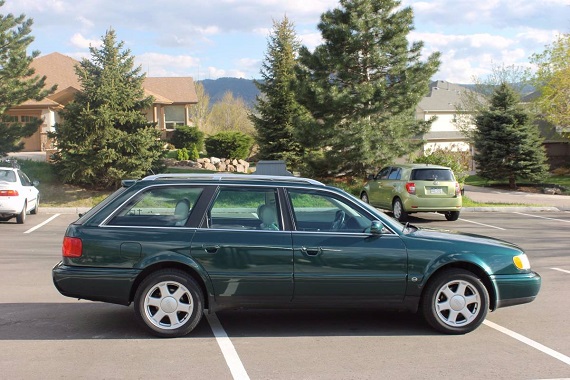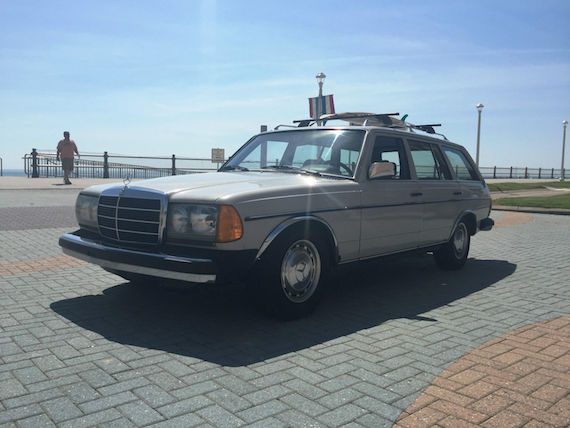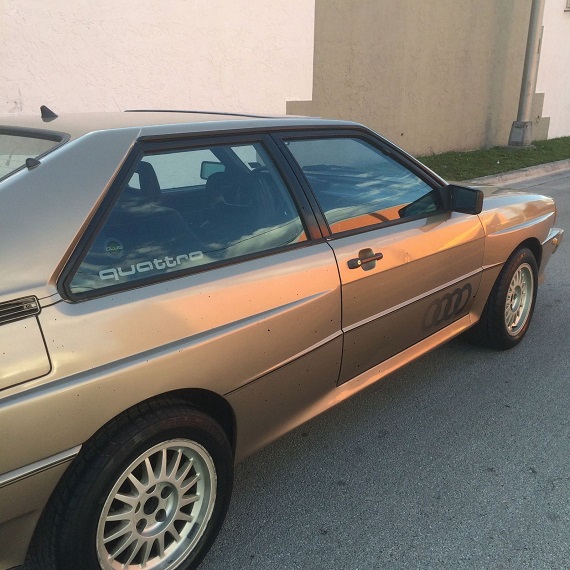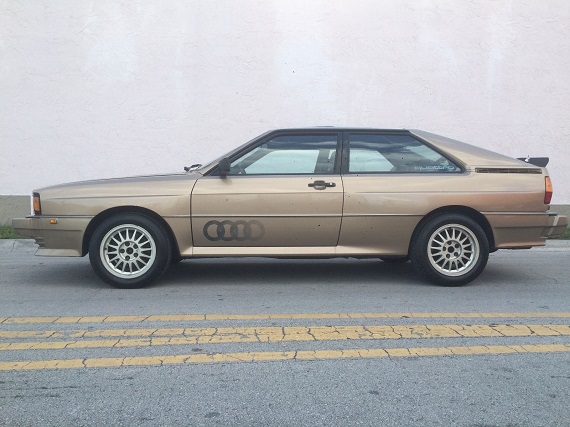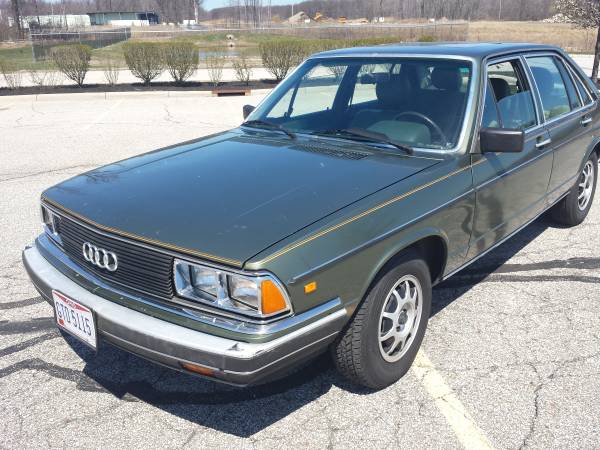For U.S. customers, 1992 rather quietly signaled the end of an era for fans of the small chassis. Starting in the early 1980s, Audi had offered their offbeat 5-cylinder motor in models like the 4000 5+5 and Coupe models, but it was really the rally success of the Quattro that put the 5-pot on the map. But the turbocharged variant was quiet expensive, so fans of Audi’s WRC campaign rejoiced in 1984 when the all-wheel drive platform became much more affordable in 4000 quattro form. In Europe, there were several variants and power plants available in 80 and 90 form, but U.S. customers only got the relatively high-spec 4000S/CS quattro. Audi revised the model lineup with the B3 model run, introducing the lower-spec 80 and the more luxurious (and later, more powerful) 90. When the 90 went to the DOHC 7A 20V inline-5, the 80 remained with the 10V 2.3 liter NG which had first appeared in the Special Build Coupe GT model. Though not hugely powerful and feeling slightly overwhelmed by the 80 quattro’s mass, it was a very smooth and fun to drive package capable of huge odometer readings. The package remained available until 1992, when life of the 80 ended in the U.S. as it was not upgraded to B4 specification. As with all Audis from the period, it sold in small numbers: Audi reported only 640 sold in 1992, with not many more sold in the years before it. As the book closed on the inline-5 with a whimper rather than a bang, it’s relatively infrequent to spot one of these late 80s:
Tag: inline-5
Though they may not generate the gasps and pleasure groans of the RS models Craig and Andrew wrote up last week among enthusiasts outside of the brand, classic Audi fans in the U.S. still regard the original S4 and S6 one of the best models produced by the company. Indeed the S6 Avant has gained notoriety as a “Holy Grail” for fans of the marque here, as it offered the ultimate development of the C4 chassis and inline-5 coupled to analogue all-wheel drive offered in this market. Only a few hundred of these wagons made it here, increasing the mystique and desirability of the package. Both of today’s examples are presented in the defacto signature color of the C4, Emerald Green Mica (Smaragdgruen Pearl) with Ecru leather and both have been turned up a notch from stock. The first example has all the wizz-bang completed, while the second has been maintained and is ready for further upgrades. Which is the one you’d like?
CLICK FOR DETAILS: 1995.5 Audi S6 Avant on quattroworld
5 CommentsThe sight of a W123 wagon on the road never fails to bring a smile to my face. It’s a testament to the durability of these cars that they can still be seen today doing exactly what their designers intended forty years ago, chugging along faithfully and reliably, hauling stuff around. We’ve seen nice, well-kept examples fetch between $10K and $20k over the last few years. As a result, a lot of the nicer ones have been snapped up by rich hipsters (it’s not for nothing that many of them have ended up in Brooklyn). That’s a shame because these were always the workhorses of the Mercedes lineup and the hike in their value has put them out of the reach of those who just want a cheap, no-frills hauler.
That makes this particular car, suggested to us by our reader Don, all the more refreshing. While the mileage is low, the car is certainly not mint, and the somewhat tired but perfectly usable condition will help to keep the price of this one on the affordable side.
CLICK FOR DETAILS: 1980 Mercedes-Benz 300TD on eBay
Comments closedAt the first Audi Club track event I went to, I excitedly hurried my 4000CS quattro through the hills of Northwest Connecticut to Lime Rock Park. The year was 1997, and while I had been heading to the track for many years this was my first foray to an Audi event. Back in ’97, old Audis were pretty uncommon – hard to fathom considering how scarce they are today. So going to an all-Audi event promised to be a special collection of audacious Audis, and I was certainly not disappointed. There were no less than ten Quattros in attendance, and may have even been more – I struggle a bit to remember, but a fair chunk of the instructor core had them and even a few students showed up with the legendary cars. It was a bit like those nature shows of Ridley Sea Turtles arriving on Mexican beaches once a year to lay eggs; a baffling display of the entire world’s population arriving in one spot at one time when for the rest of the year they’re spread around the world’s oceans. Quattros, especially large numbers of Quattros, are like that. Let’s put some figures into perspective – E30 M3s are rare, right? Sure, only around 5,000 made it to the U.S. with a pretty good amount still being sold on eBay today being driven as they should. 190E 16V owners enjoy pointing out that their cars are much more endangered, as just shy of 2,000 made the Atlantic crossing. Low residuals mean a lower percentage of those original 1,953 still are dog-legging around. E24 M6, E28 M5, E34 M5? Sure, all very low production cars. But the Quattro? 664 came here, and how many are left today is a good question. I’d estimate the number of Quattros remaining alive and in good condition to likely be less than 2/3rds of the original 664 – figure maybe 400 are still around and serviceable. Think about the last time you saw an E30 M3 cruising along down the road (it doesn’t count if you own one or were at a show)? You’re at least ten times less likely to happen across a Quattro. Finally, they’re starting to be appreciated for their special nature, but they’re certainly still critically endangered in the U.S.:
